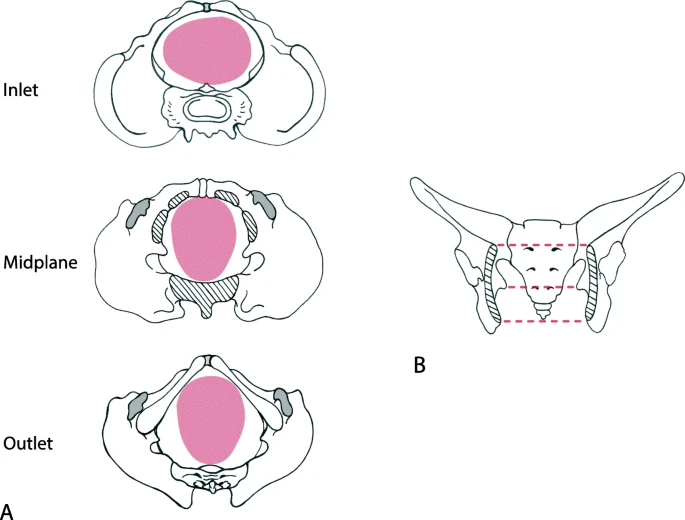There's an odd twist to human physiology not seen in any other primate, that makes giving birth more complicated for our species. Now, a study using biomechanical modelling on gait and posture has provided some insights into this long-standing mystery.
The narrow shape of the human birth canal is kinked at the inlet, so that contractions of the mother must rotate the baby's big brain and wide shoulders nearly 90 degrees to fit into the pelvis.
Imagine sliding a foot into a tight boot with a twisted entrance and you've got a rough idea of how challenging this can be. If the baby gets stuck, it can endanger both the life of the mother and child. In fact, this is thought to occur in as many as 6 percent of all births worldwide.
So what's the advantage? Surprisingly, for such a key element in the reproduction of our very species, we're still trying to figure that out.
 (Stansfield et al., BMC Biology, 2021)
(Stansfield et al., BMC Biology, 2021)
Above: The rotational birth of humans. A) shows the head turning about 90° to fit into the largest dimension of the pelvic plane; B) shows the layers of the birth canal.
Today, some of the most fundamental parts of human pregnancy are a complete mystery. We don't know, for instance, why our species undergoes such long and dangerous labors compared to other mammals.
Traditionally, it is thought the human pelvis is shaped the way it is to make walking easier. Evolutionarily speaking, the advantages of bipedal movement on a daily basis were clearly worth the extra risks that came with having narrow hips and big-brained babies.
In the new study, extensive biomechanical models of the pelvic floor suggest the shape of the birth canal doesn't help us walk so much as it helps us stand up.
"We argue that the transverse elongation of the pelvic inlet has evolved because of the limits on the front-to-back diameter in humans imposed by balancing upright posture, rather than by the efficiency of the bipedal locomotion", says Philipp Mitteroecker, who was also involved in this study."
If the inlet from the womb to the birth canal was a deeper oval, a baby could slide right through without very many fussy movements at all, as they do in other primates.
But in a human, this would require the pelvis to tilt at an even greater degree than it already does, which would add a deeper curve to the lower back.
Ultimately, the new models suggest that extra curve would compromise the stability and health of our spines, which is possibly why the inlet to the birth canal evolved a new shape instead.
In comparison, other primates, like chimpanzees, can afford to have a deeper inlet to the pelvis because they are mostly on all fours and aren't putting a lot of weight on their hips. To get through to the birth canal, chimpanzee young only have to twist their heads a little.
The human baby, by comparison, has to move their body nearly 90 degrees to face the mother's spine to fit through the tight ellipsoid.
Even after this tricky maneuver, it's not a straight slide into the world. The outlet of the human birth canal is also shaped slightly different to primates. It requires the baby to once again turn to get its shoulders out, which are widest on a different axis to the head.
The models run by researchers suggest the outlet of the birth canal is shaped this way to better support the pelvic floor.
If the lower birth canal had an outlet that was wider still, the results indicate it would help pelvic floor stability even more; however, it would ultimately make childbirth too risky. The final twist would be too hard for the head and shoulders to shimmy through.
"Our results provide a novel evolutionary explanation for the twisted shape of the human birth canal," the authors conclude.
It's an intriguing idea from a well-thought out model, but real-world research will be needed to determine if this is really why humans are born with a twist and a shout.
Evolutionary studies, for instance, have shown female Neanderthals had birth canals more similar to chimpanzees, which suggests twisting is a uniquely human and relatively recent evolutionary development.
Given that Neanderthals also stood and walked on two feet, it would be interesting to compare the biomechanics of ancient humans to figure out why the modern human pelvis stands out.
The study was published in BMC Biology.
#Humans | https://sciencespies.com/humans/human-birth-canals-are-seriously-twisted-researchers-think-theyve-figured-out-why/

